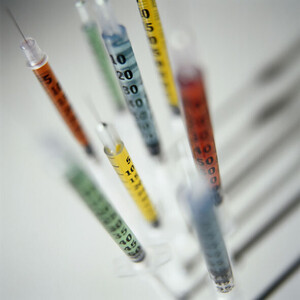The FDA’s recently published plans for a biosimilar approval pathway are facing increasing scrutiny. In an interview with Scientific American, Novel Health Strategies’ biosimilar market entry advisor, Dr Saurabh Aggarwal, said that the level of data required by FDA is too much for biosimilars to be able to succeed [1].
Is FDA requesting too much data to allow biosimilars to succeed in the US
Biosimilars/News
|
Posted 26/08/2011
 0
Post your comment
0
Post your comment

Dr Aggarwal added: ‘For biosimilars to be successful, the amount of data required from a regulatory standpoint cannot be as onerous as that required to get a pioneer biological approved. The fact is, you need interchangeability in the label to succeed. The way the current biosimilars provision is written, if you want interchangeability to be on the label, you need clinical studies to show that you can replace the branded product. Step into the shoes of any of the current companies considering biosimilar development. You can use the analogy that biosimilar developers are like generics manufacturers, so their estimate of what they can invest is maybe 5-10 million [US] dollars. The FDA approval pathway as explained so far would require far more than that.’
In Europe, not only are regulations less strict than those in the US, but an EMA approval permits full interchangeability with the reference product. This means pharmacists can exchange the drug for the patented name-brand version without needing doctor or patient approval. Indeed, recent EMA guidelines on biosimilar mAbs development replace interchangeability with a lesser requirement that a biosimilar antibody simply not be more harmful than the reference antibody. Though the EMA guidelines still require clinical trials, including safety trials, the EMA guideline is still a lesser standard than that for a pioneer biological, and a lesser standard than industry groups have proposed in the US.
In fairness to FDA, Dr Aggarwal’s views are not universally shared. American insurers are already concerned about including biosimilars on healthcare policies, whilst a survey by Decision Resources, one of the world’s leading research and advisory firms for pharmaceutical and healthcare issues, has found that the majority of US and European physicians asked are wary of using a biosimilar for an indication for which supporting clinical data are lacking, i.e. when the biosimilar has only shown phase III equivalence for one of its other indications, not the one for which it is being prescribed [2].
Related articles
FDA and biosimilars: process update
FDA and biosimilars: update on key themes
FDA gives some insight into biosimilar pathway
EMA and FDA to collaborate on biosimilars
References
1. Britton K. Biosimilars are back: or are they? [cited 2011 August 26]. Available from: blogs.scientificamerican.com/guest-blog/2011/08/07/biosimilars-are-back-or-are-they/
2. Merron A. Biosimilars Advisory Service: U.S. and EU Payer Perspectives [cited 2011 August 26]. Available from: decisionresources.com/Products-and-Services/Report?r=basxxx0511
Research
Reaching ESG goals in pharmaceutical development
What is the future for the US biosimilar interchangeability designation
General
Samsung Bioepis wins Pyzchiva case; Regeneron patent rulings threaten foreign biosimilars
Chinese biosimilars go global: growth, partnerships, and challenges
EMA recommends approval for four biosimilars targeting three therapies

Biosimilars/News Posted 10/10/2025
FDA approves first interchangeable rapid-acting insulin biosimilar, Kirsty

Biosimilars/News Posted 03/10/2025
The best selling biotechnology drugs of 2008: the next biosimilars targets







Post your comment